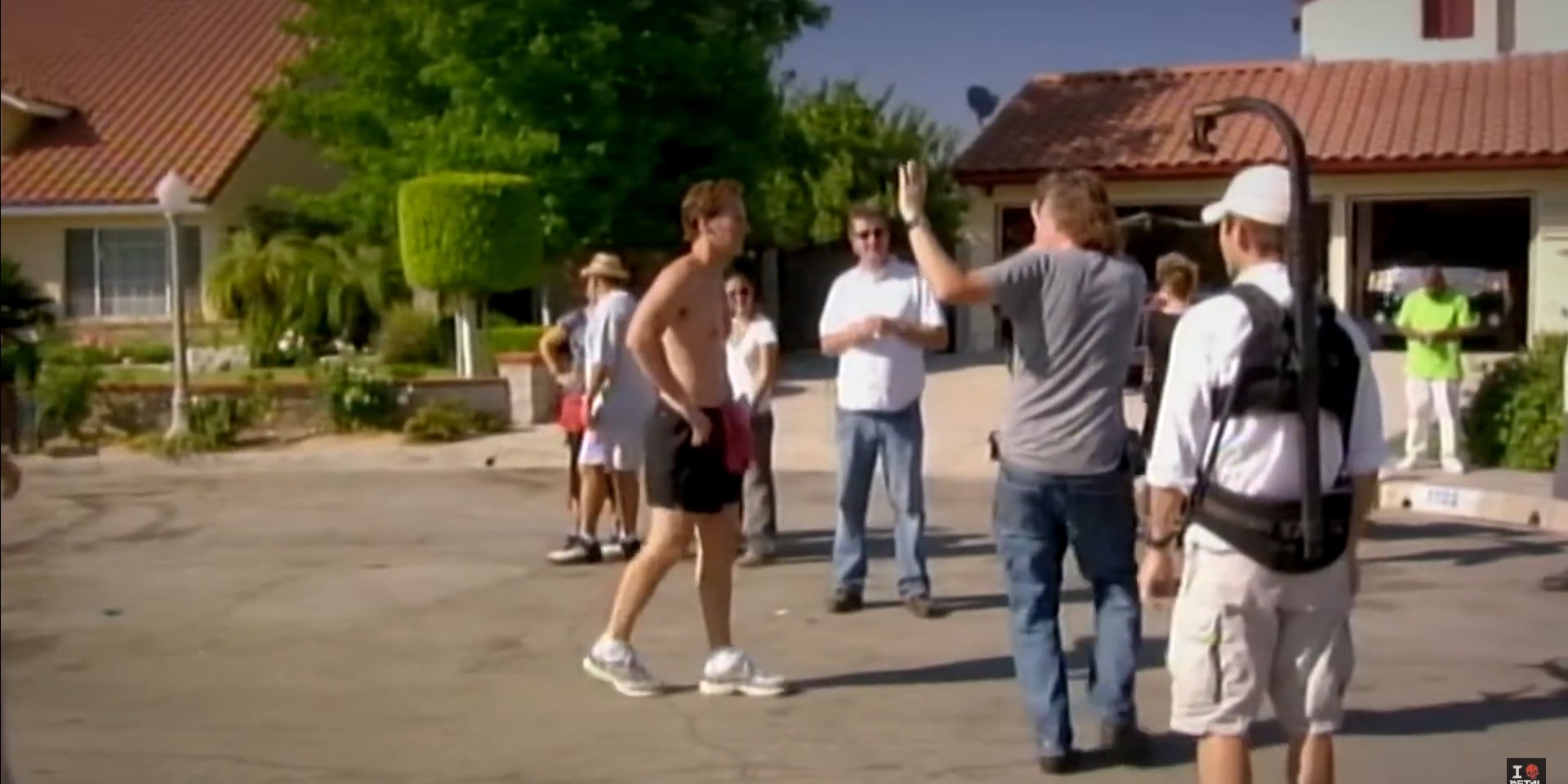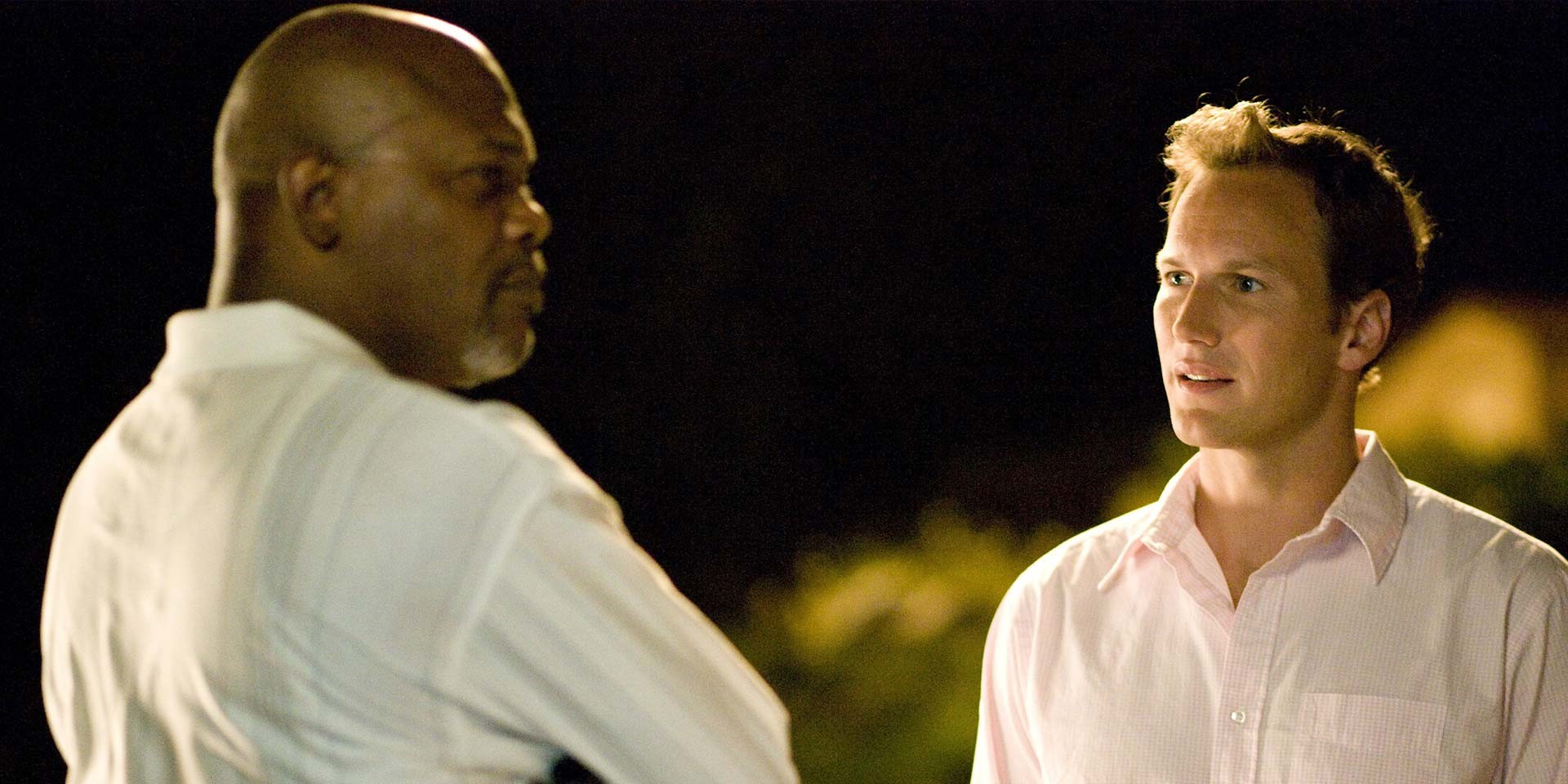Helmed by director Neil LaBute, ‘Lakeview Terrace’ introduces us to an interracial couple, Chris (Patrick Wilson) and Lisa (Kerry Washington), who move into their posh new home within a gated community in Lake View Terrace, Los Angeles. Their celebrations come to an abrupt halt when their neighbor, Abel Turner (Samuel L. Jackson), begins to harass the couple, trying to get them to leave. Abel is an African-American widower raising two children with stringent rules inside his own home and ideals he enforces on those outside. Having an interracial couple live next door to him is something he cannot tolerate because of his past, and creates an escalating level of nuisance for them. When they try to report him they discover that he is a cop, and beloved by the community.
With no one believing them, and nowhere left to turn, the newlyweds decide to entrench themselves in an escalating series of confrontations with their racist neighbor. The 2008 drama thriller film manages to turn the idyllic setting of the couple’s neighborhood in Lake View Terrace, into a nightmare scenario for any family. The film also takes us through the point of view of Abel as he polices the streets, encountering rougher neighborhoods in the city. The dynamic tones of settings in the film might have you wondering if shooting for it actually took place in the suburban neighborhood of Lake View Terrace, or if another location was used in its place.
Where Was Lakeview Terrace Filmed?
‘Lakeview Terrace’ was filmed entirely in the Los Angeles County of California. However, the set of houses used for the majority of the movie was not in the neighborhood of Lake View Terrace in San Fernando Valley, but in the city of Walnut. Hawthorn in South Bay is also featured in a few outdoor scenes of the film. Principal photography was carried out in a relatively short amount of time and was wrapped up by June 2007. Allow us to take you to the neighborhoods and locals used to paint the backdrop of this unique film.
Walnut, California
Considered to be one of the best locations to live in Los Angeles, Walnut gives an almost rural feel to its residents. The dry landscape became a background for the film as it was shot at properties on Deer Creek Drive. The two houses we see in the movie are 1100 North, which doubled up as Chris and Lisa’s home, and 1102 North, which saw Abel take up residence in it. The suburban neighborhood served as a perfectly believable backdrop for the film, with the characters being in a somewhat remote location, essentially trapping the young couple with their unstable neighbor.

The production crew reworked the interior and exterior of both homes. Bruton Jones, the production designer, went with tones of yellow as a base for other shades in the interiors of the homes. Using mostly orange, yellows, and reds, he created a warmer feeling that lends itself to the increasingly heated atmosphere, both physical and emotional. The backyard of Chris and Lisa’s home posed a challenge for the team, as it was covered with patchy desert soil.
The production team completely landscaped the entire area and created the beautiful garden we see in the film, using local varieties of plants. Their efforts paid off in creating a calming environment which served as an oasis for the couple in times of intense pressures, to cool off and rally together before facing the heat once more.
Hawthorn, California
The film crew used the city within the Los Angeles metropolitan area to lens scenes involving Abel’s excursions into the urban landscape. When he comes out of the police station with his partner and talks to a group of police officers, we can identify the backdrop as Grevillea Avenue and 126th Street. The quaint suburban neighborhood serves to emphasize Abel’s charismatic personality as he projects it to the world, which makes his switch into a menacing antagonist all the more impactful.
Read More: Lakeview Terrace: The True Story Behind the Movie, Explained


You must be logged in to post a comment.